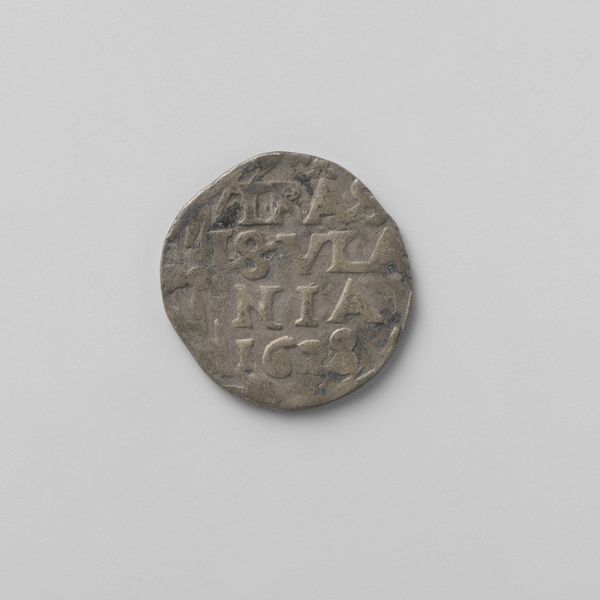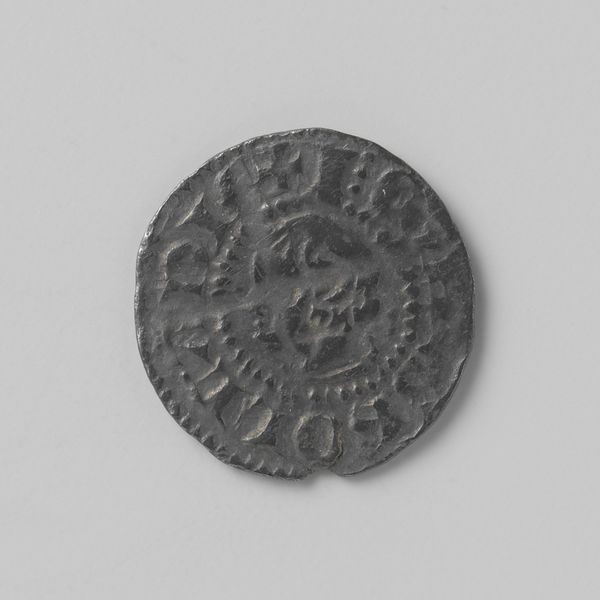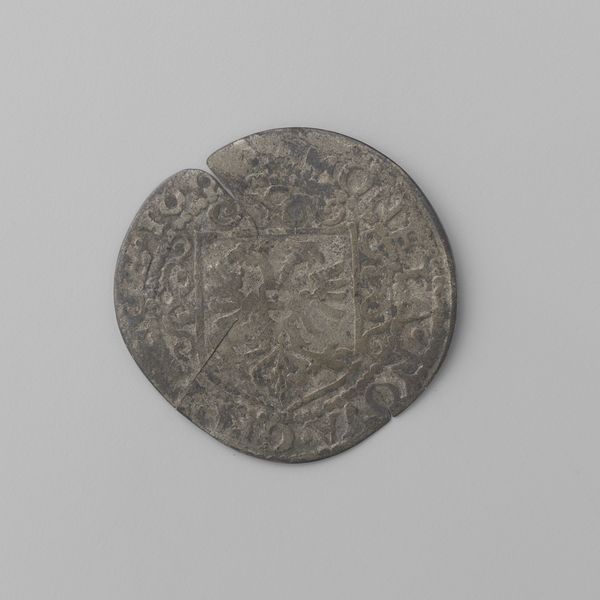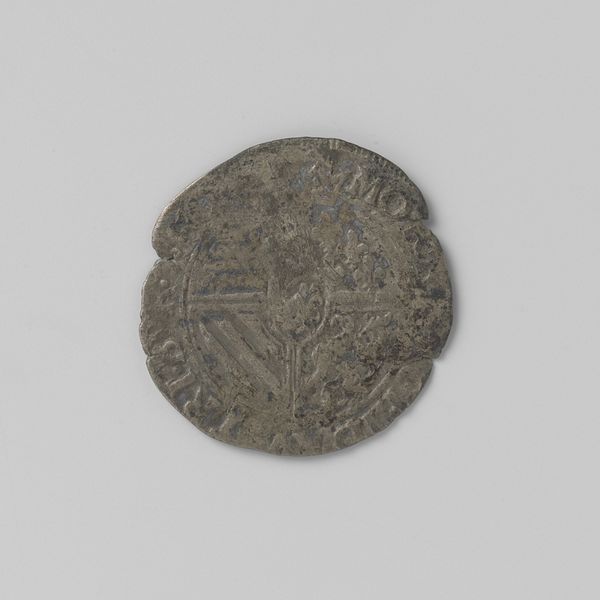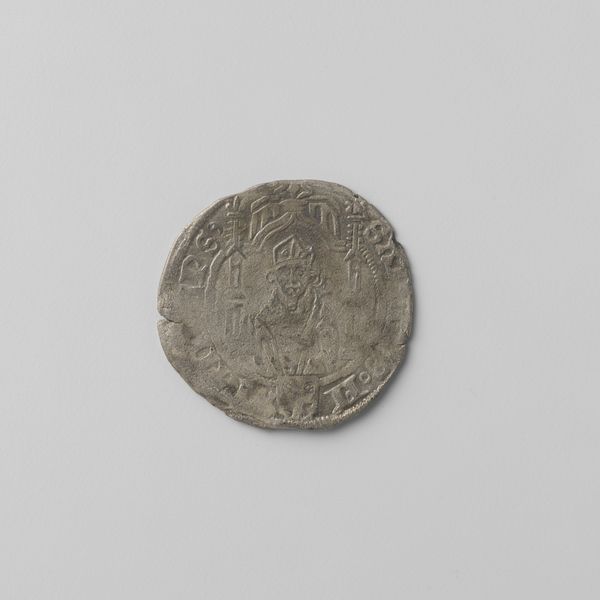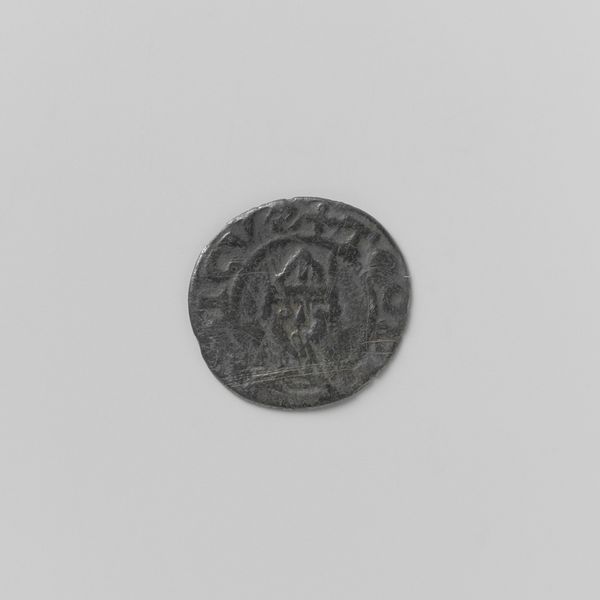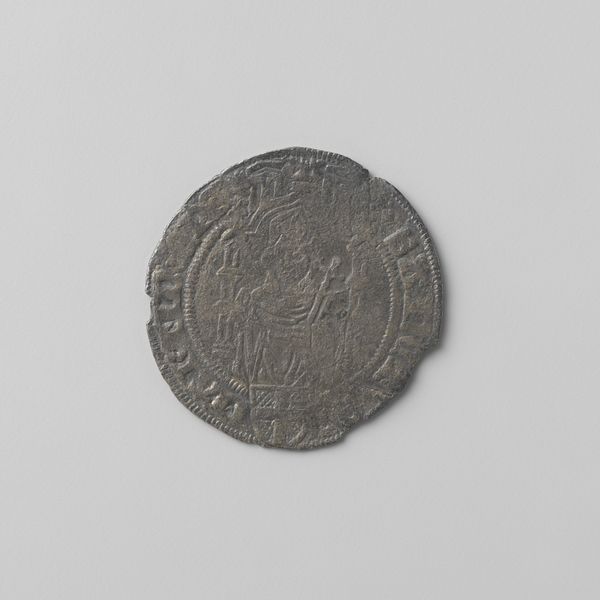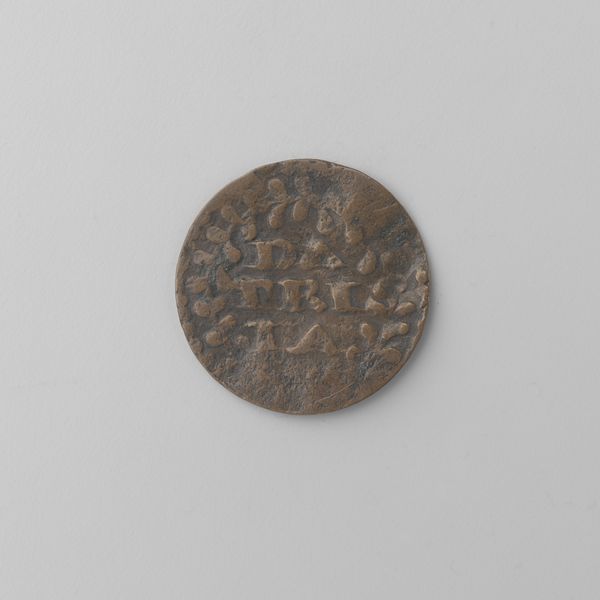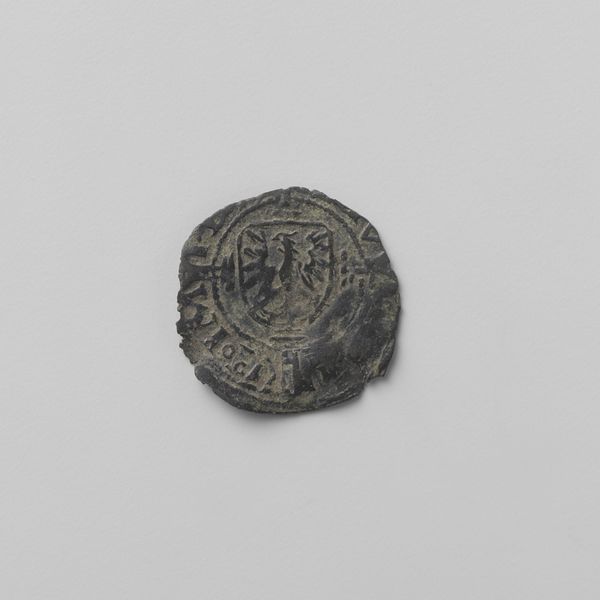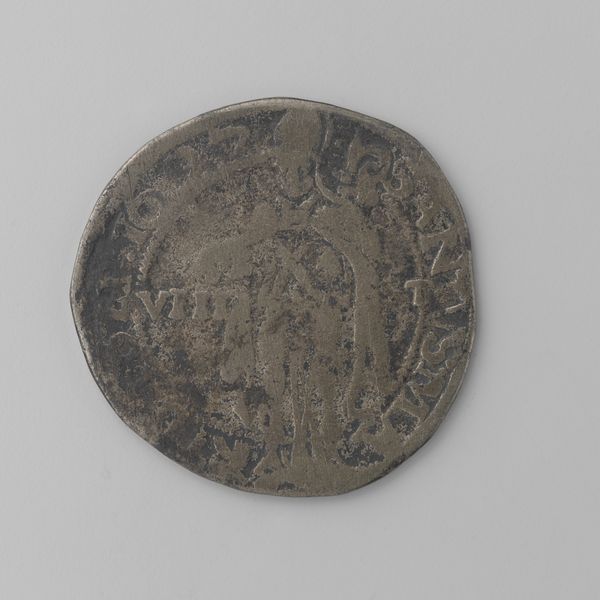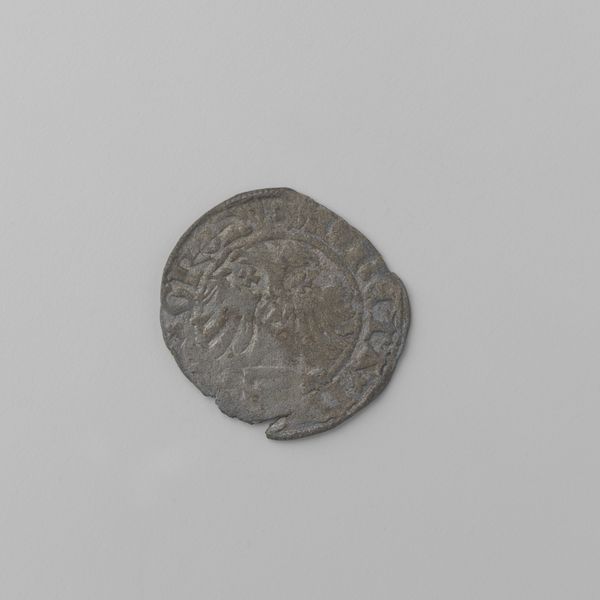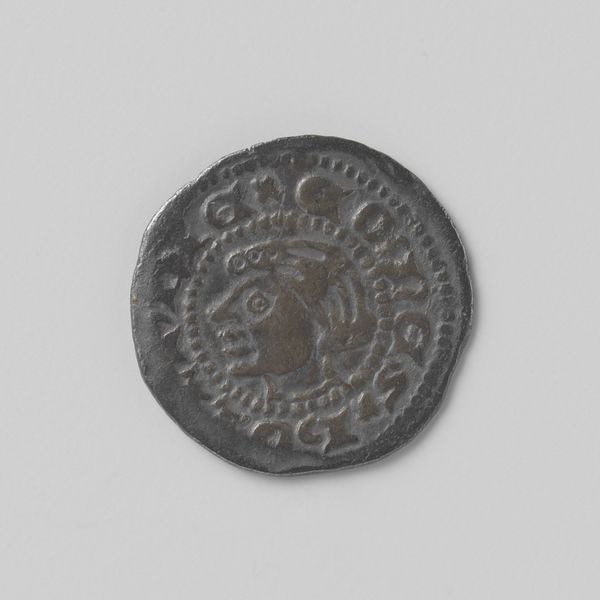
metal, relief, sculpture
#
medieval
#
metal
#
sculpture
#
relief
#
geometric
#
sculpture
Dimensions: diameter 1.2 cm, weight 0.67 gr
Copyright: Rijks Museum: Open Domain
Editor: We're looking at a "Gelderse penning (denier) van graaf Otto II," a medieval coin made of metal dating back to between 1229 and 1271. The textures and shapes feel really simple and direct. How do you interpret this work from a formalist point of view? Curator: The coin, at first glance, presents a circular format, emphasizing a sense of unity. The artist works within the restrictions of space. We might examine how effectively this limited relief suggests power. Editor: Are there are formal properties you find particularly intriguing? Curator: Note the execution of line; there's an evident tension between the rigidity of geometric pattern and the somewhat free rendering of the central figures and forms, which produces visual interest despite its small scale. What of the patination—does it diminish or augment the form? Editor: That's interesting, because it's so worn, it seems like the patination sort of softens the overall texture. Do you see any meaning created from that worn surface? Curator: The worn nature certainly changes the character and contributes to its beauty. The light catches the varying planes unevenly, further articulating form and grounding our contemporary viewing. But, consider if that meaning distracts us from the object's composition as originally conceived. Does it risk overwhelming the intentionality of the Medieval artist? Editor: It is definitely something to consider. I’ve learned a lot. Looking at the work as a set of lines and patterns is new to me. Curator: As for me, your remarks encourage to think about how the work has meaning based on the current time and setting of its display.
Comments
No comments
Be the first to comment and join the conversation on the ultimate creative platform.
